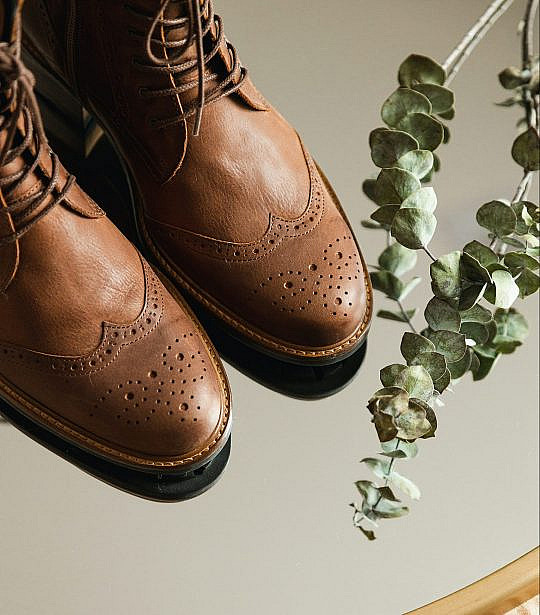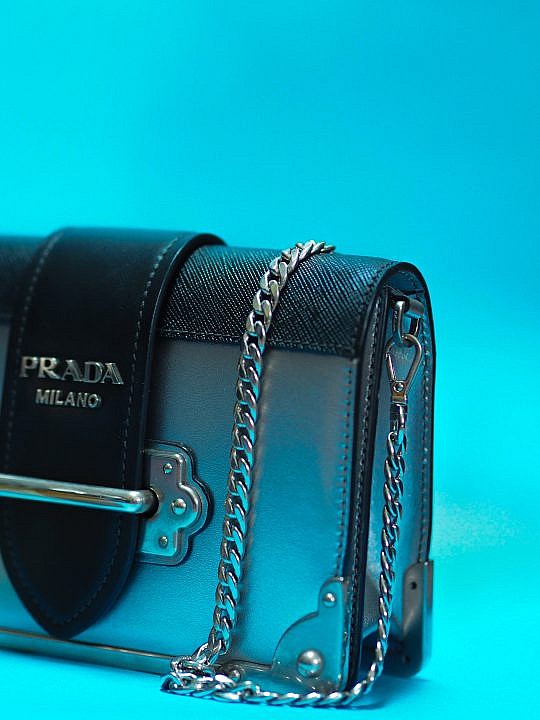
Leather versus synthetics – five ways leather beats manmade products
We may be biased, but we’re also know we’re right! We look at the ways leather beats its manmade competitors.
Just 24 years ago, Alla Almasuri worked in a supermarket. Now he owns a high-tech leather manufacturing company and has a revolutionary plan to move the leather industry to zero waste.

Alla Almasuri
We can thank Alla Almasuri’s love of the “Fast and Furious” movie franchise for his pioneering work in leather craft and technology.
When his beloved Nissan Skyline, bought in homage to the films, needed a new leather cover for the gear lever gate, he found he would have to pay £90 to get one imported from Japan. So he bought a leather skirt from a charity shop, borrowed his boss’s sewing machine, and made one himself.
But we’re getting ahead of ourselves. Alla arrived in London from Jordan in 1998 to, as he says: “find a new life”. He became as a porter at New Covent Garden Vegetable Market in Nine Elms and then started to work in a supermarket in Kingston, West London. He trained as a butcher when he realised that was one of the best paid jobs there.
After studying at Kingston College and a spell working for a fire alarm company, Alla’s lightbulb moment resulted, literally, in a change of gear.
Discussing the leather gear lever cover on an online forum devoted to his favourite car, he soon found interest from other owners. That night, he made three more covers for other Skyline afficionados and turned a handsome profit from the charity shop skirt.
Realising he could make a good business from this, he began attending Japanese car shows to get templates for other gear lever covers so he could make and sell them.
Soon he was covering all the charity shops in South West London, picking up as many useable leather skirts and jackets as he could. Business went so well he gave up his day job, started buying new leather and expanded his market to different car brands from all over the world. He branched out into motorcycle upholstery and even jetskis and snowmobiles.
His business flourished over the years and he took on the technology to service it. He bought 3D printers to make the gates that the gear lever covers sit over and began taking on other projects and commissions from designers. Now he employs 32 people.
During lockdown, Alla decided he wanted to start using his work in the leather industry to do good. He established AForce, a company that combines high-tech with traditional craft, with the motivation that everything had to be sustainable. Every fixture of his factory is reclaimed or repurposed, from flooring from an old football stadium to railings made from the stalls of an old cattle barn.
He explains: “AForce has to be green. And it has to be with an attitude, which is giving back to the country which gave so much to me.”
Cutting down on waste is vital to Alla’s sustainability drive and it led to him pushing the boundaries of technology.
He found that of the 40,000 square feet of leather he was using each month, a quarter of it was wasted – “I felt like I was losing 10,000 square feet in the skip”.
He started trying to shred the wasted leather so he could find new uses for the broken down product. But none of the shredders on the market were tough enough. So he went to a company called Nanoforce Technology to see if they could help him break it down.
With Alla’s prompting and cajoling, they worked out not just how to shred the leather, but how to break it down into its constituent parts. These are chrome (chromium III, the harmless one, not VI, the toxic one) collagen, gelatin and lump – lump being the fibrous remnants of the hide.
Each of these materials has its own value. The chrome is easier and cheaper to obtain this way than that used in tanning. The collagen, even if it is removed from leather that is decades old, is just as useful and valuable as fresh, as is the gelatin. And the lump, the bit you might imagine as the least useful, is the most versatile.
It can be used to form panels of cars, it can be used in dog food, but perhaps the most exciting application comes from its insulation properties. Soundproof, fire resistant and with low thermal conductivity, it is ideal for building cladding.
All leather can be reduced to these elements in this process. New leather discarded by producers and old leather that may have been lying discarded in an attic for decades.
Working with, and funding, technicians at Bangor University, Alla created insulation blocks for buildings that are not only cheaper than the ones currently used, but they are also more efficient.
Alla’s not interested in making money from this new way of using discarded leather – he just wants it to work at scale.
He says: “This is the solution for the leather waste in the world. By giving the method to everyone, not by just using for myself, we can do some real good.”
“The leather industry is worth £400-£450billion a year and about a quarter is being thrown away every year. That’s about £100billion. What would make me proud is how to use that. How to use all that product instead of synthetic material. “
The next stage of his mission is finding someone to invest enough to build a plant to deal with all the waste leather in the country, and to provide a model for the rest of the world.
Alla’s eye to the future means he also helps the leather trade by supporting students. Each month he donates 100sq ft of leather to Westminster University and lets students use studios in his South West London headquarters for nothing – also letting them loose on the technology and lending them the valuable experience of the craftspeople he employs.
And it sounds like this is just the start: Alla explains: “We have proudly sponsored two Menswear MA students to complete their final collections at AForce London. The students can access a wide range of machinery specialised in luxury leather goods manufacturing as well as a vast collection of materials. This is only the beginning of our journey, and we are working towards many more initiatives that will not only unleash the creativity of young designers but will also significantly enhance their skills and prospects for future employment.”
Professor Andrew Groves of Westminster University says: “AForce has been extremely generous in providing a group of our students with exceptional quality leather as well as their expert knowledge to assist them in creating some outstanding garments. It has enabled students to incorporate their exceptional quality leather into their new collections that will be showcased on the runway at London Fashion Week in June.”
Alla is convinced he can achieve zero waste in the leather industry. And he wants to help future pioneers – the design students he supports – on the way.
He has a concise saying to describe his aims: “Leather for good”.
“Leather for good means for good things in life. Yes, luxury, but for sustainability and people’s futures. To stop waste and to use reclaimed things where manmade products would have been used. And that, for me, is a very big message.”
Real Leather. Stay Different is working in partnership with AForce who have generously manufactured the designs of the finalists if the Real Leather. Stay Different. Student Design competitions.

We may be biased, but we’re also know we’re right! We look at the ways leather beats its manmade competitors.

We’re huge fans of The Restory, the high-end leather goods restoration service dedicated to prolonging the life of your favourite pieces.

Her hand-painted clothes and accessories bagged the attention of supermodel Bella Hadid and singer Dua Lipa, both of whom have been spotted in her trousers.

There’s no better way for a man to make a sartorial statement than with a leather suit and Wonka star Timothée Chalamet managed two different ones as the film’s premieres rolled out around the world.